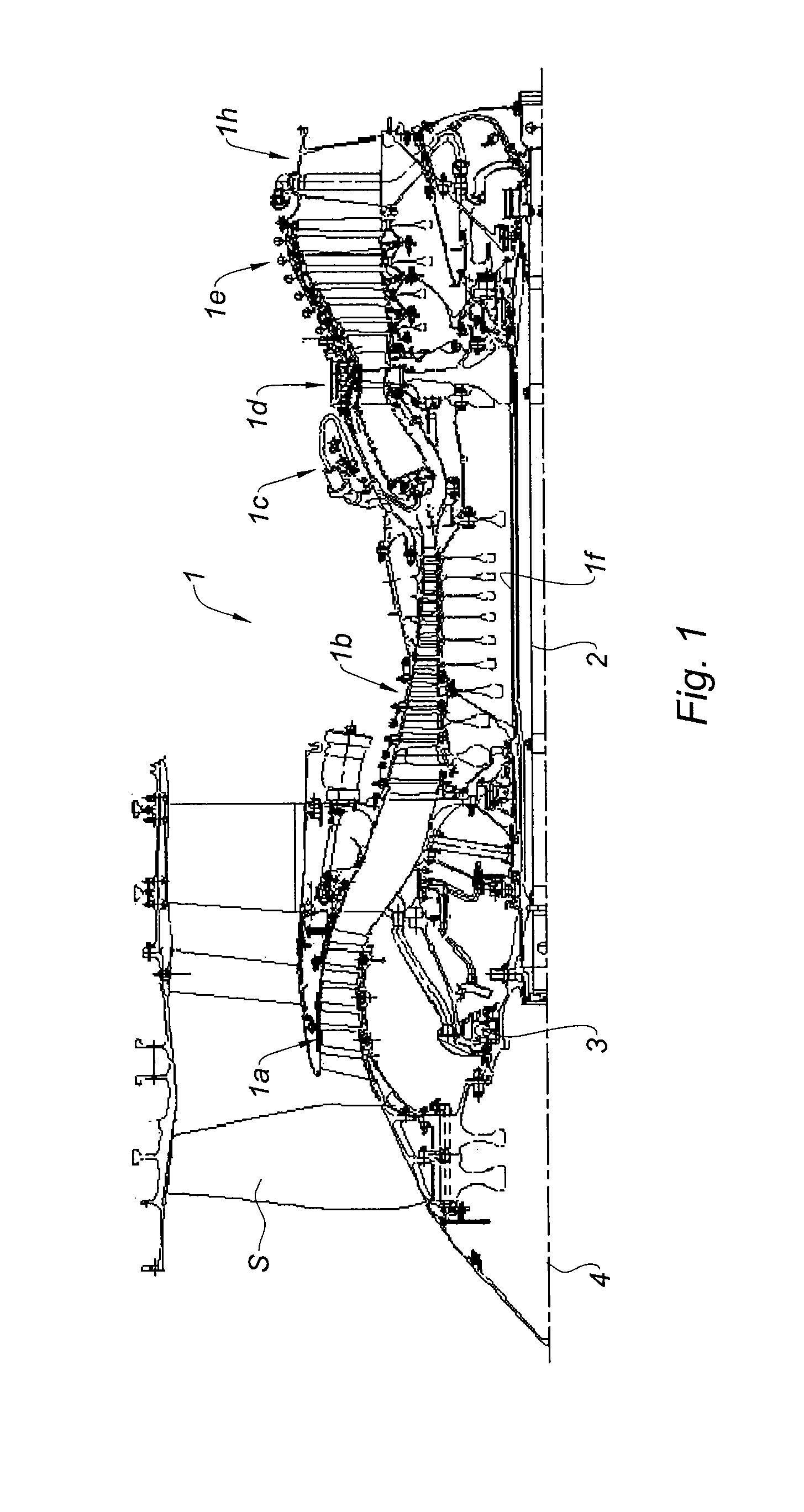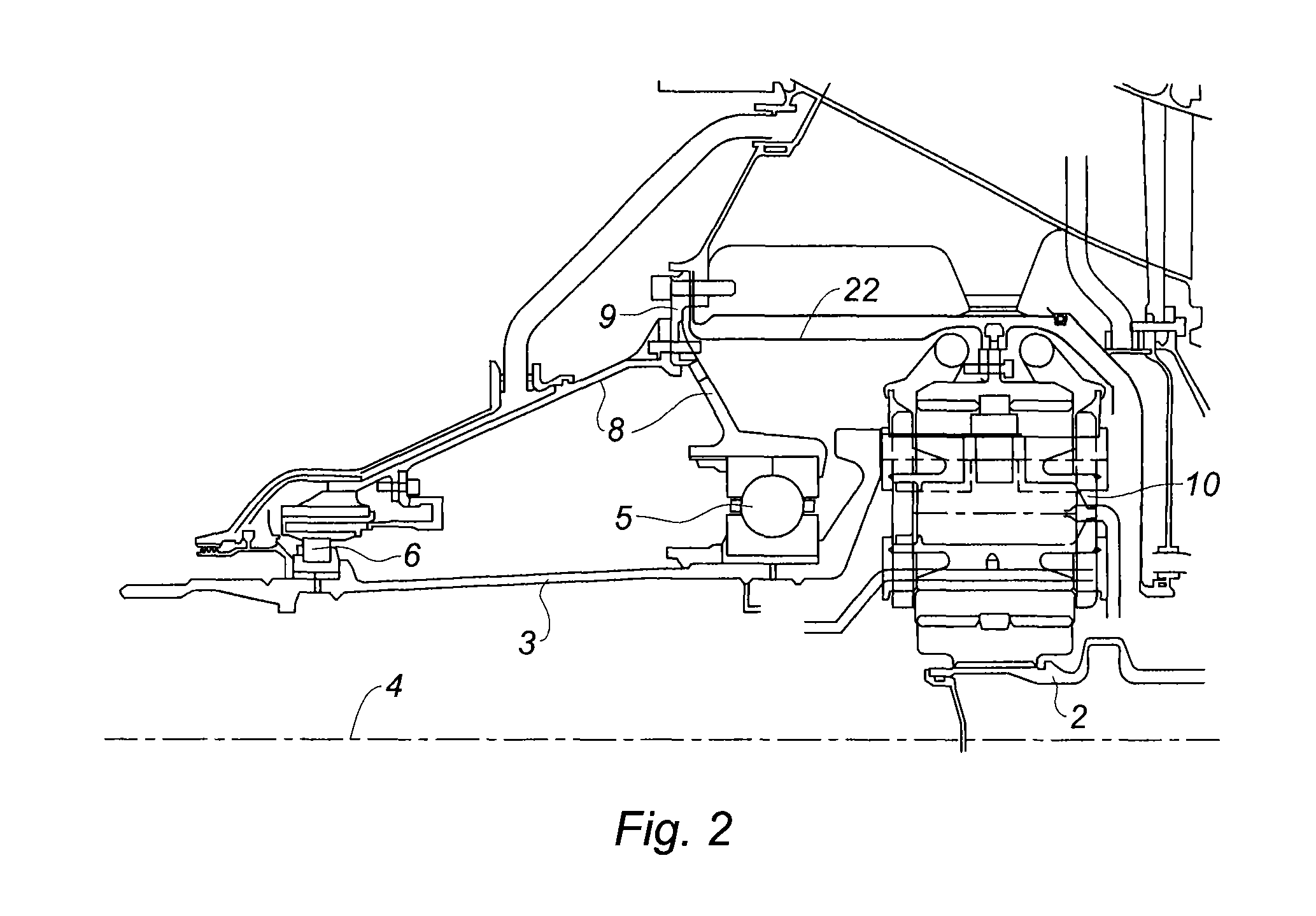Reduction gear with epicyclic gear train having roller-bearing-mounted planet spindles
a technology of gear train and planet spindle, which is applied in the field of aeronautical propulsion, can solve the problems of pump size, weight and lifespan, and precautionary measures to be taken, and achieve the effects of reducing the number of gear train rollers
- Summary
- Abstract
- Description
- Claims
- Application Information
AI Technical Summary
Benefits of technology
Problems solved by technology
Method used
Image
Examples
Embodiment Construction
[0040]The operation of a reduction gear with epicyclic gear train, as proposed by the invention, in which the planet spindles 16 are mounted on the planet carrier through a rotary bearing and are fitted with a locking flange plate made of a shape memory material, will now be described.
[0041]The reduction gear has two operating modes, depending on the position imparted to the flange plate 43 and depending on the element against which it is pressing. Switching from one mode of operation to the other is carried out automatically, as a function of the ambient temperature in the reduction gear and, in particular, the temperature of its lubrication oil.
[0042]In what is termed normal operation, which corresponds to the operation of reduction gears of the prior art, having a single mode of operation, or to reduction gears according to the invention in the configuration shown in FIGS. 4 and 5, the lubrication oil is hot and the flange plate 43 presses against the planet carrier 13. The flang...
PUM
 Login to View More
Login to View More Abstract
Description
Claims
Application Information
 Login to View More
Login to View More - R&D
- Intellectual Property
- Life Sciences
- Materials
- Tech Scout
- Unparalleled Data Quality
- Higher Quality Content
- 60% Fewer Hallucinations
Browse by: Latest US Patents, China's latest patents, Technical Efficacy Thesaurus, Application Domain, Technology Topic, Popular Technical Reports.
© 2025 PatSnap. All rights reserved.Legal|Privacy policy|Modern Slavery Act Transparency Statement|Sitemap|About US| Contact US: help@patsnap.com



